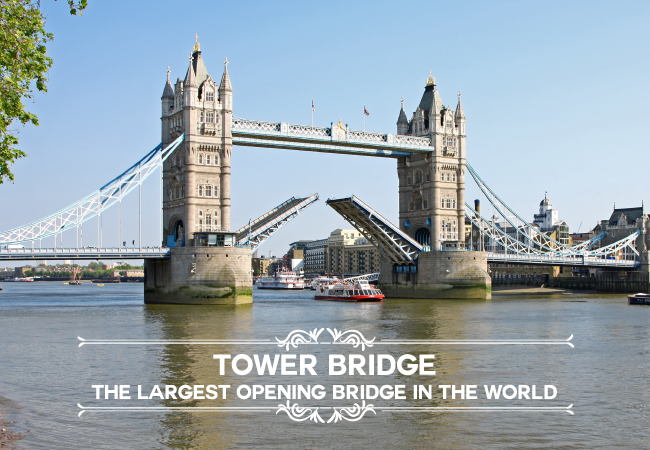Spanning the River Thames since 1894, Tower Bridge is one of the most recognisable bridges in the world. At the time, it was the largest and most sophisticated bascule bridge ever built providing views of the city through a glass-enclosed walkway with museums in each tower house. It has become an iconic symbol of the capital and its construction is a skillful engineering achievement.
Bridge History
The second half of the 19th century saw an increase of commercial development in East London. As a result, the area became extremely crowded which led to the necessity of a bridge across the Thames. In 1876, the City of London Corporation decided that it could no longer delay the problem and took on the huge challenge of building a bridge. The “Special Bridge or Subway Committee” formed to generate ideas, and opened a public competition to design the crossing. Over 50 designs were submitted. But it wasn’t until 1884 that they approved city architect Sir Horace Jones’s design. He put forward a proposal for a low-level bridge on the bascule principle.
“Bascule” is derived from the French word for see-saw. The bascule bridge is a kind of drawbridge which works on a pivot. It has a heavy weight at one end to balance the greater length of the other.
How the bridge was built
With 5 major contractors and 432 workers involved in the construction, it took 8 years to build Tower Bridge. What’s more, over 11,000 tonnes of steel provided the framework for the towers and walkways. Its ornate Victorian Gothic style makes the bridge a distinctive landmark and harmonises with the nearby Tower of London.
The bridge is 800 feet (244m) in length with two towers each 213 feet (65m) high built on piers. The central span of 200 feet (61m) between the towers is split into two equal bascules or leaves operated by hydraulic methods and can be raised to allow river traffic to pass. The bascules, weighing over 1,000 tonnes each, are counterbalanced to minimise the force required and allow raising for five minutes. Six massive accumulators are used to operate the bridge. They use steam to generate power which is then fed to the accumulators. This energy then lifts the bridge bascules to a height of about 86 degrees. From the year 1976 electricity and oil were used in place of steam. In addition, the bridge also uses a navigation system to signal ships and control traffic.
Visiting the Bridge
A visit to Tower Bridge Exhibition is the most exciting way to enjoy majestic views of the city through its high-level walkways between the two bridge towers. It’s also a great way to learn about the workings of the bridge and the history behind its creation via photos, films, and other media.
Follow us on Instagram @goldentoursuk!

